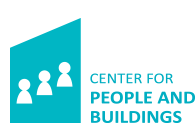Accommodating new ways of working: lessons from best practices and worst cases
April 2016 | Sandra Brunia, Iris de Been, Theo van der Voordt
Paper in the Journal of Corporate Real Estate, Vol. 18 Iss 1 pp. 30 -47. Due to copyright unfortunately it's not possible to give access to the full article on our website. If you are interested in the full text, you can request the author (see below) for it.
Purpose
This paper explores which factors may explain the high or low percentages of satisfied employees in offices with shared activity-based workplaces.
Design/methodology/approach
The paper compares data on employee satisfaction from two cases with remarkably high satisfaction scores and two cases with significantly lower satisfaction scores (total N = 930), all of the same organisation. These cases were selected from a database with employee responses to a standardized questionnaire in 52 flexible work environments. In the four case studies, also group interviews were conducted.
Findings
Overall, there are large differences in employee satisfaction between cases with, at first sight, a similar activity-based office concept. The main differences between the best and worst cases regard employee satisfaction with the interior design, level of openness, subdivision of space, number and diversity of work places, and accessibility of the building. Employee satisfaction shows to be influenced by many physical characteristics of the work environment and by the implementation process. Satisfaction with the organisation may have an impact as well.
Research limitations/implications
Almost all cases regard Dutch organisations. Due to the lack of quantitative scales to define the physical characteristics of the work environment, the study is mainly descriptive and explorative and does not include advanced multivariate statistical analyses.
Practical implications
The data revealed clear critical success factors including a supportive spatial lay-out to facilitate communication and concentration, attractive architectural design, ergonomic furniture, appropriate storage facilities, and coping with psychological and physical needs such as privacy, thermal comfort, daylight and view. Critical process factors are the commitment of managers, a balance between a top-down and a bottom-up approach, and clear instructions on how to use activity-based workplaces.
